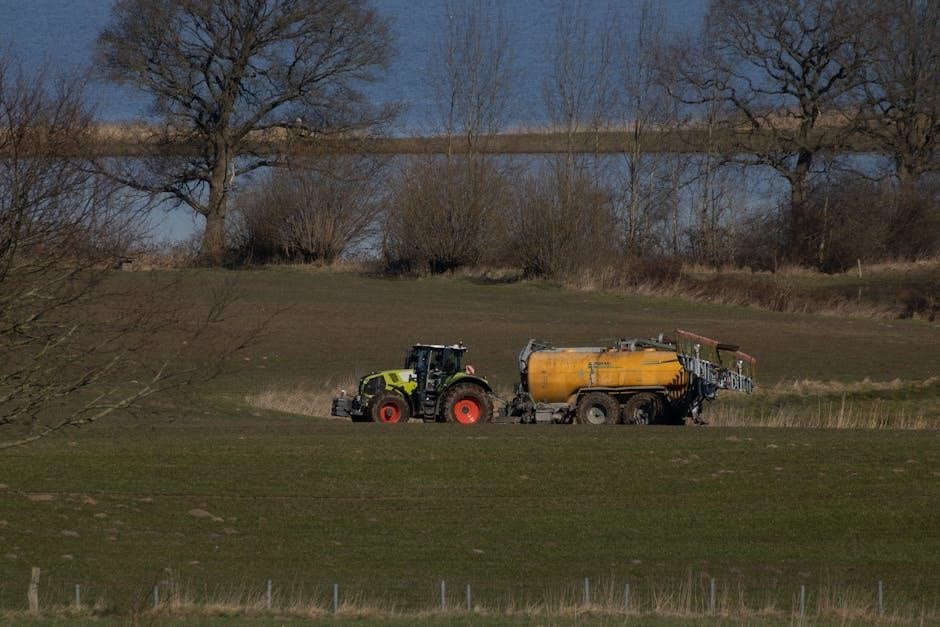
Raymond Carver’s Everything Stuck to Him is a poignant frame story exploring themes of love, parenthood, and life-altering choices, set against the backdrop of a monsoon season in India.
Overview of “Everything Stuck to Him”
Raymond Carver’s short story Everything Stuck to Him is a frame narrative that explores the complexities of love, parenthood, and life-altering decisions. The story begins in Milan during Christmas, where a man recounts a pivotal moment from his past to his grown daughter. It revolves around a young couple deeply in love, whose lives take a dramatic turn when they face the challenges of parenthood. The husband, Carl, struggles with balancing his passion for hunting and his responsibilities as a father. The narrative delves into the emotional and psychological depths of the characters, highlighting the sacrifices and choices that shape their identities and relationships. Carver’s concise yet powerful prose underscores the universal themes of love, sacrifice, and the enduring impact of life’s decisions;
Historical Context of the Story
Raymond Carver’s Everything Stuck to Him is set against the backdrop of the monsoon season in India, a time of natural renewal and turmoil. This setting reflects the emotional and psychological struggles of the characters, who grapple with the challenges of parenthood and identity. The story does not explicitly reference historical events but captures the universal human experiences of love, sacrifice, and decision-making. The monsoon season serves as a metaphor for the cyclical nature of life and the inevitability of change. Carver’s minimalist style emphasizes the internal conflicts of the characters, making the narrative timeless and relatable across cultures and generations. The story’s focus on family dynamics and personal choices resonates with readers, transcending specific historical contexts.
Author’s Background and Writing Style
Raymond Carver, an American literary icon, crafted Everything Stuck to Him with his signature minimalist approach. His writing often explores themes of love, parenthood, and choices through simple yet profound narratives. Carver’s work is known for its emotional depth, achieved without ornate language, allowing the reader to connect deeply with the characters’ struggles. His background in blue-collar jobs and personal struggles with addiction influenced his focus on ordinary people facing extraordinary emotional challenges. This story reflects his ability to convey complex emotions through subtle dialogue and sparse descriptions, making his stories relatable and impactful. Carver’s style ensures that the narrative resonates with universal human experiences, leaving a lasting impression on readers.
Literary Elements
The story employs a frame narrative, blending past and present, with vivid imagery of monsoon rains symbolizing emotional turmoil and transformation, enhancing its emotional resonance.
Narrative Structure: Frame Story Analysis
The story unfolds as a frame narrative, beginning with a man recounting past events to his grown daughter; This structure allows for a dual timeline, blending the present conversation with the internal story of a pivotal moment in their lives. The external frame sets the context, while the internal story delves into the emotional and psychological depth of the characters. The use of this technique enables Carver to explore themes of memory, identity, and the passage of time. The frame story also serves to highlight the emotional distance and intimacy between the father and daughter, creating a layered narrative that enriches the reader’s understanding of the characters’ motivations and relationships.
Symbolism in the Story
The story employs vivid symbolism to convey deeper meanings. The recurring image of “everything stuck to him” symbolizes the burdens and responsibilities that weigh heavily on the protagonist. The monsoon season serves as a symbolic backdrop, representing emotional turmoil and renewal. The sticky substances clinging to the father metaphorically illustrate how life’s challenges and choices adhere to individuals, shaping their identities. The daughter, as a central figure, symbolizes the lasting impact of parental decisions and the bond between generations. These symbols collectively underscore the themes of love, sacrifice, and the enduring consequences of human choices, enriching the narrative’s emotional and psychological depth. The use of such imagery allows readers to connect with the characters’ struggles on a profound level.
Imagery and Setting: The Role of Monsoon Season
The monsoon season in the Indian village serves as a vivid and oppressive backdrop, with relentless rain and humidity creating a sense of claustrophobia. The imagery of the wet, sticky environment mirrors the emotional turmoil of the characters, particularly the father, who feels burdened by his responsibilities. The rain-soaked setting symbolizes renewal and cleansing, yet also highlights the inevitable challenges of life. The village’s rural surroundings contrast with the couple’s earlier life in Milan, emphasizing their isolating journey. The monsoon’s intensity amplifies the story’s emotional tension, making it a central element in the narrative’s exploration of parenthood, sacrifice, and the weight of choices. The setting underscores the themes of struggle and transformation, deeply embedding them in the reader’s imagination.

Theme Development: Love, Parenthood, and Choices
Raymond Carver’s Everything Stuck to Him masterfully explores themes of love, parenthood, and the consequences of choices. The story delves into the complexities of romantic love, transitioning from youthful passion to the responsibilities of marriage and family. Parenthood emerges as a central theme, highlighting the sacrifices and challenges faced by the couple, particularly the father, who grapples with balancing personal aspirations and familial duties. Choices serve as a catalyst for identity formation, illustrating how decisions, both deliberate and unavoidable, shape lives. The narrative underscores the idea that love and parenthood require difficult trade-offs, leaving lasting imprints on individuals. Through these themes, Carver examines the human condition, emphasizing the transformative power of love and the weight of responsibility that accompanies it.

Themes
Central themes include love, parenthood, and choices, exploring how these elements intertwine to shape identities and relationships in the story.
The Impact of Choices on Identity
In Everything Stuck to Him, the narrative delves into how choices shape identity, emphasizing the lasting effects of decisions made in moments of crisis. The protagonist’s dilemma—between personal desires and familial responsibilities—illustrates this theme. His choice to prioritize his daughter’s well-being over hunting reflects a shift in his identity from an individual to a caregiver. This transformation highlights the idea that choices not only define us but also create a sense of responsibility and purpose. The story underscores the notion that identity evolves through the consequences of our decisions, often leading to unforeseen growth and self-discovery.
Love and Relationships in the Story
Love and relationships are central to Everything Stuck to Him, portrayed through the deep bond between the husband, wife, and their daughter. The story captures the essence of romantic love in its early stages, as the young couple navigates marriage and parenthood. Their relationship evolves from passion to a mature, enduring connection, tested by life’s challenges. The father-daughter dynamic is particularly significant, showcasing unconditional love and sacrifice. The narrative highlights how relationships shape identities and influence decisions, emphasizing the transformative power of love. Through these interactions, Carver illustrates the complexity and beauty of human connections, making love a driving force in the story’s emotional landscape.
Parenthood and Sacrifices
Parenthood and sacrifices are deeply intertwined in Everything Stuck to Him, as the husband and wife confront the challenges of raising their daughter. The husband’s decision to stay with his sick child, forfeiting his hunting plans, exemplifies the sacrifices inherent in parenthood. These choices not only reflect his devotion but also reveal the emotional toll of responsibility. The wife, though often silent, supports her family through unwavering dedication. The story underscores how parenthood reshapes identities, prioritizing the well-being of children over personal desires. Sacrifices, though difficult, strengthen familial bonds and highlight the selfless nature of parental love. This theme resonates as a universal truth, illustrating the profound impact of parenthood on human lives.

Character Analysis
The story delves into the complexities of its characters, focusing on the husband, wife, and daughter, each embodying distinct emotional journeys and motivations that drive the narrative forward.
The Husband: Carl’s Character and Motivations
Carl, the husband, is portrayed as a man deeply conflicted between his personal aspirations and familial responsibilities. His love for hunting symbolizes a desire for freedom and escape, yet he is anchored by his devotion to his family. The story highlights his internal struggle during a critical moment when his daughter falls ill, forcing him to choose between his passion for hunting and his role as a father. This dilemma underscores his character’s complexity, revealing a man torn between individuality and responsibility. Carl’s actions and decisions drive the narrative, illustrating how his choices shape not only his identity but also the dynamics of his family life. His motivations are rooted in a quest for balance, making him a relatable and human figure in the story.
The Wife: Her Role and Emotional Journey

The wife in Everything Stuck to Him plays a pivotal role as the emotional anchor of the family. Her journey is marked by resilience and silent strength, particularly during her daughter’s illness. While her husband, Carl, grapples with his own desires and responsibilities, she remains steadfast, ensuring the well-being of their child. Her unwavering support for Carl, despite his flaws, highlights her deep love and commitment to their family. The story portrays her as a nurturing figure who balances the household’s emotional dynamics, providing stability amidst chaos. Her character underscores the theme of parenthood and the sacrifices it entails, making her an integral part of the narrative’s emotional core.
The Daughter: Symbolism and Representation
The daughter in Everything Stuck to Him serves as a symbolic figure, embodying innocence and vulnerability. Her presence in the story highlights the sacrifices and challenges of parenthood, as her illness during the monsoon season becomes a pivotal moment. The daughter’s character represents the delicate balance of family life and the ways in which children are often at the mercy of their parents’ choices. Through her, Carver illustrates the emotional weight of responsibility and the profound impact of parental decisions on a child’s life. Her role underscores the theme of love as both nurturing and burdensome, making her a central symbol of the story’s exploration of family dynamics.

Plot Development
Set in Milan during Christmas, the story unfolds as a man recounts his past to his daughter, detailing their journey, challenges, and the pivotal illness that alters their lives, highlighting love, sacrifice, and the impact of choices.
Exposition: Setting the Scene in Milan
The story begins in Milan during Christmas, where a young couple embarks on their journey. The city’s vibrant backdrop contrasts with their quiet, intimate moments. The husband, Carl, balances his hunting hobby with family life, while the wife navigates motherhood. Their daughter’s illness during a rainy night alters their plans, showcasing the challenges of parenthood. The setting in Milan, with its festive atmosphere and rainy weather, provides a poignant backdrop for exploring love, sacrifice, and the complexities of family life. The narrative seamlessly transitions between past and present, framing the internal story within the introductory setting, highlighting the emotional depth of their experiences. The exposition sets the tone for a story that delves into the enduring impact of choices and relationships.
Rising Action: The Couple’s Journey and Challenges
The rising action of Everything Stuck to Him unfolds as the young couple navigates their blossoming relationship and the responsibilities of parenthood. Set in Milan, their journey begins with romance and marriage, highlighting their deep connection. However, challenges emerge when their daughter falls ill during a rainy night, forcing Carl to postpone his hunting plans and prioritize his family. This decisive moment underscores the sacrifices inherent in parenthood. The narrative shifts between the present and the past, intensifying the emotional tension. The couple’s struggle to balance personal desires with familial duties creates a compelling conflict, setting the stage for the story’s turning point and deepening the exploration of love, identity, and choice.

Climax: The Turning Point in the Story
The climax of Everything Stuck to Him occurs when the husband, Carl, is covered in food, symbolizing the chaotic reality of parenthood. This moment marks a turning point as he confronts the sacrifices required to care for his sick daughter. The story’s tension peaks here, highlighting the emotional weight of his responsibilities. The sticky, messy situation mirrors the complexities of family life, forcing Carl to reflect on his choices and identity. This scene is pivotal, as it underscores the themes of love, duty, and the irreversible impact of decisions on one’s life. The climax emotionally resonates, illustrating how parenthood reshapes priorities and self-perception.
Falling Action: Consequences of Decisions
Following the climax, the falling action reveals the emotional and relational consequences of the couple’s choices. The husband, Carl, grapples with the sacrifices of parenthood, while his wife’s silent resentment grows. The sticky, chaotic moment earlier symbolizes the messiness of their lives, now irreversible. Their love, once passionate, is strained by the demands of raising a sick child. The daughter’s illness forces them to confront their new reality, testing their bond. The falling action highlights how decisions shape identities and relationships, leaving lasting emotional scars. This section underscores the story’s themes of love, duty, and the enduring impact of life choices.
Resolution: The End of the Frame Story
The resolution ties the frame story together, returning to the present as the father finishes recounting the past to his grown daughter. The story concludes with a sense of closure, as the daughter, now understanding her parents’ sacrifices, reflects on the bond they share. The monsoon season, once a backdrop for chaos, transitions to calm, symbolizing the family’s enduring resilience; The father’s recollection underscores the lasting impact of their choices, revealing how love and parenthood have shaped their identities. This final moment emphasizes the passage of time and the quiet acceptance of life’s challenges, leaving a poignant reflection on family and memory.

Symbolism and Metaphors

The metaphor of “everything stuck to him” symbolizes the accumulation of life’s choices and emotions, defining his identity and experiences.
The Significance of “Stuck” as a Metaphor
The metaphor of “stuck” in Everything Stuck to Him represents the accumulation of life’s choices and emotional burdens that define Carl’s identity. This imagery symbolizes how decisions, like the food sticking to him, become inseparable from his being, shaping his character and relationships. The physical stickiness mirrors the inescapable consequences of his actions, reflecting the enduring impact of love, parenthood, and sacrifices.
Water and Rain as Symbolic Elements
Water and rain in Everything Stuck to Him serve as powerful symbolic elements, deeply intertwined with the narrative’s emotional and thematic layers. The monsoon season setting creates a backdrop of relentless, oppressive wetness, mirroring the internal turmoil and emotional saturation of the characters. Rain symbolizes both cleansing and chaos, reflecting the story’s exploration of love, parenthood, and the weight of choices. It also underscores the cyclical nature of life, as water imagery often represents transformation and renewal. The persistent rain amplifies the tension and isolation, highlighting the characters’ struggles to navigate their circumstances. Ultimately, water and rain become metaphors for the inevitable and enduring impact of life’s challenges.
Reception and Analysis
Everything Stuck to Him has been widely praised for its nuanced exploration of love, parenthood, and identity, sparking meaningful discussions among readers and critics alike.
Critical Reception of the Story
Everything Stuck to Him has garnered significant critical acclaim for its exploration of love, parenthood, and identity. Reviewers praise its emotional depth and relatable themes, highlighting how the story resonates with readers on a personal level. The narrative structure, particularly its use of a frame story, has been commended for its effectiveness in weaving past and present. Critics also note the author’s ability to craft vivid imagery and symbolism, such as the monsoon season, which enriches the story’s emotional landscape. The characters’ motivations and the consequences of their choices are frequently discussed, with many applauding the story’s ability to provoke reflection on life’s complexities. Overall, the story is celebrated as a masterful portrayal of human relationships and their enduring impact.
Reader Interpretations and Discussions
Readers of Everything Stuck to Him often discuss its emotional depth and relatable themes, particularly the complexities of love, parenthood, and identity. Many interpret the story as a reflection on how life’s choices shape who we become. The frame narrative structure sparks debates about the reliability of memory and storytelling. The monsoon season is frequently seen as a metaphor for emotional turmoil and transformation. Readers also highlight the husband’s internal conflict between personal desires and familial responsibilities, resonating with universal struggles. The wife’s emotional journey and the daughter’s symbolic role in the narrative are additional focal points, with readers exploring how these characters embody sacrifice and the consequences of love. These discussions underscore the story’s enduring relevance to human experiences.
Raymond Carver’s Everything Stuck to Him masterfully explores love, parenthood, and identity through a frame story, leaving readers with a profound reflection on life’s defining choices and their lasting impact.
Raymond Carver’s Everything Stuck to Him is a frame story that delves into themes of love, parenthood, and the impact of choices on identity. Set during the monsoon season, the narrative explores a young couple’s journey, highlighting their emotional struggles and sacrifices. The story’s structure, combining an introductory and internal story, emphasizes the passage of time and the lasting effects of decisions. Symbolism, such as water and rain, underscores the emotional depth and transformation of the characters. Through its vivid imagery and relatable themes, the story offers a profound reflection on life’s defining moments and their enduring consequences.

Final Thoughts on the Story’s Meaning
Everything Stuck to Him is a profound exploration of how life’s choices and experiences shape identity. Through the frame story, Carver masterfully illustrates the enduring impact of parenthood, love, and sacrifice. The narrative’s emotional depth, enhanced by the monsoon setting, underscores the transformative power of decisions. The story teaches us that life’s defining moments, though often challenging, are inseparable from who we become. The universal themes resonate deeply, inviting readers to reflect on their own journeys and the choices that “stick” to them. Ultimately, the story is a poignant reminder of the beauty and complexity of human relationships and the inevitable passage of time.

